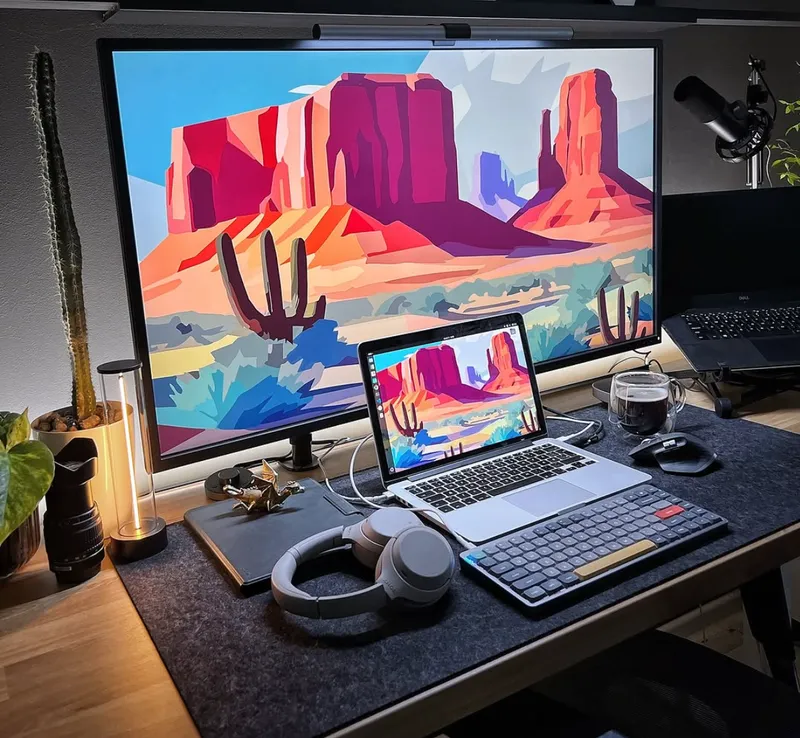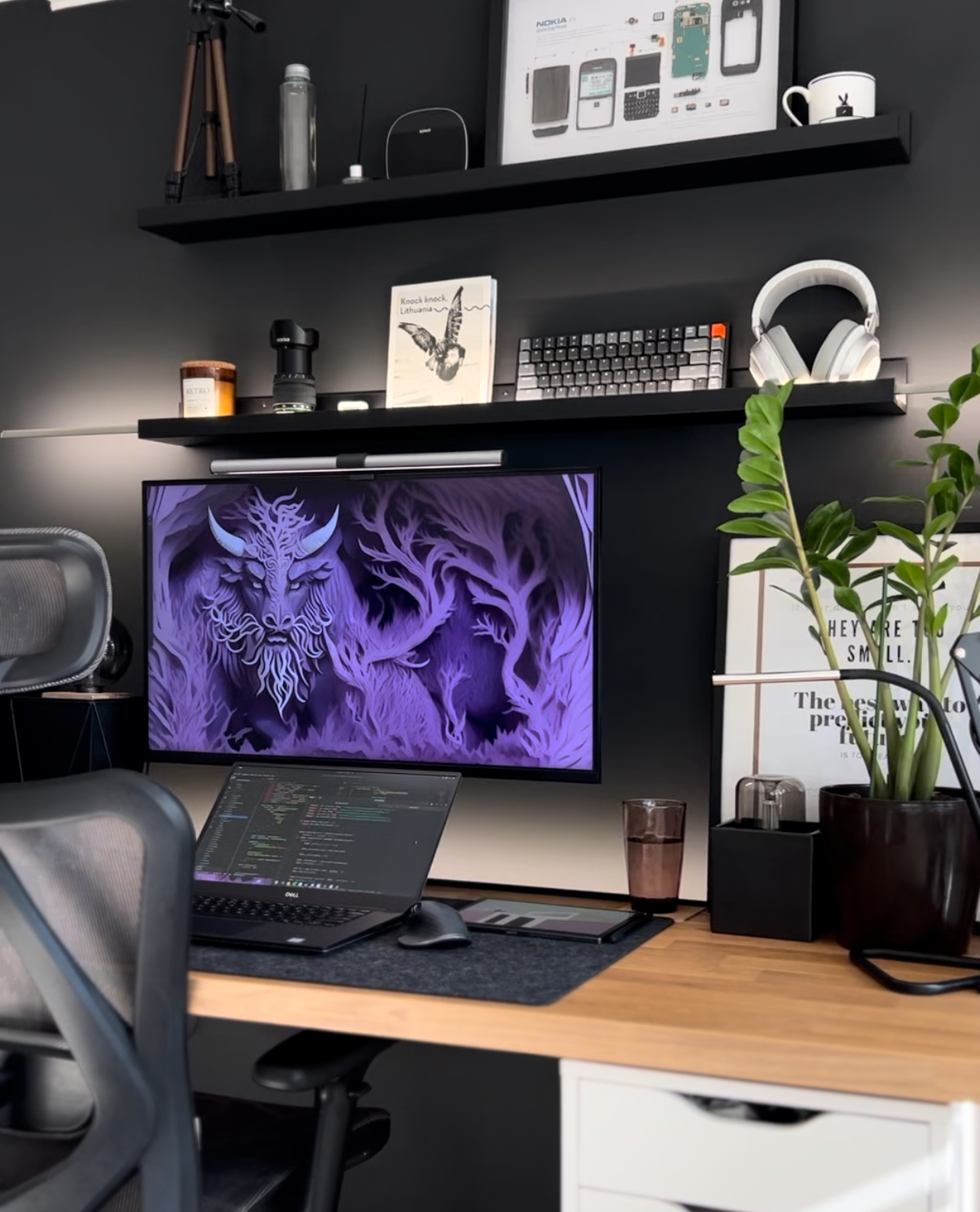Color psychology
Color psychology is about understanding how different colors influence our moods and thoughts, shaping our reactions and experiences.

How do you decide what colors should be on your website or app? How do you choose them? Do you use color psychology tricks?
This is one of my favorite topics, especially when you don't have a designer by your side and have to make your own decisions about the color palette for your project.
Color is a powerful communication tool! It can affect people in so many different ways. If you're not familiar with it, grab some coffee or tea and search for COLOR PSYCHOLOGY on Google.
Color psychology is the study of how colors affect human behavior, emotions, and perceptions. It explores how different colors can evoke specific feelings or reactions and how they are interpreted across various cultures and contexts.
Why Color Psychology Matters in Development #
As developers, we often focus on functionality and performance, sometimes treating design as secondary. However, the colors we choose can significantly impact user experience, engagement, and conversion rates. Research shows that:
• Users form an opinion about a website within 50 milliseconds, largely based on visual design
• 85% of consumers cite color as the primary reason they purchase a product
• Appropriate color choices can increase brand recognition by up to 80%
When you understand color psychology, you can make intentional choices that support your application's goals rather than randomly selecting colors that "look nice."
The Emotional Impact of Common ColorsEach color carries psychological associations that can trigger specific emotional responses. Here's a breakdown of common colors and their typical associations in Western cultures:
Red• Emotions: Excitement, passion, urgency, danger
• Use cases: Sale notifications, error messages, calls to action that need immediate attention
• Examples: Netflix, YouTube, CNN
Blue• Emotions: Trust, security, calmness, reliability
• Use cases: Banking applications, healthcare, social media, corporate sites
• Examples: Facebook, PayPal, IBM, LinkedIn
Green• Emotions: Growth, health, prosperity, environmental awareness
• Use cases: Financial applications, health/wellness platforms, environmental sites
• Examples: Spotify, Whole Foods, Animal Planet
Yellow• Emotions: Optimism, clarity, warmth, caution
• Use cases: Attention-grabbing elements, cheerful interfaces, warning notifications
• Examples: IKEA, Best Buy, Snapchat
Purple• Emotions: Luxury, creativity, wisdom, spirituality
• Use cases: Beauty products, creative tools, premium services
• Examples: Yahoo, Twitch, Hallmark
Orange• Emotions: Enthusiasm, playfulness, affordability, friendliness
• Use cases: Call-to-action buttons, entertainment sites, food applications
• Examples: Nickelodeon, Fanta, Amazon
Black• Emotions: Sophistication, luxury, authority, elegance
• Use cases: Luxury products, photography sites, high-end brands
• Examples: Chanel, Apple (product pages), The New York Times
White• Emotions: Simplicity, cleanliness, purity, minimalism
• Use cases: Medical interfaces, minimalist designs, background for readability
• Examples: Apple, Google, minimalist portfolios
Cultural Differences in Color Perception #
It's crucial to remember that color associations vary across cultures. For example:
• White: Symbolizes purity and weddings in Western cultures but represents mourning and funerals in many Eastern cultures
• Red: Represents danger or passion in Western cultures but symbolizes good luck and prosperity in Chinese culture
• Purple: Associated with royalty in Western cultures but with mourning in some Latin American countries
If you're developing for a global audience, research the cultural significance of your color choices in your target markets.
Creating Effective Color Schemes for Your ProjectsNow that you understand the psychological impact of individual colors, how do you combine them effectively? Here are some practical approaches:
1. Start with Your Brand's PurposeBefore selecting colors, define your brand's personality:
• Is it playful or serious?
• Luxurious or accessible?
• Traditional or innovative?
Your color scheme should reflect these attributes.
2. Use Color Harmony RulesSeveral established color harmony rules can guide your choices:
• Monochromatic: Different shades of a single color (elegant and cohesive)
• Analogous: Colors adjacent on the color wheel (harmonious and pleasing)
• Complementary: Colors opposite on the color wheel (vibrant with high contrast)
• Triadic: Three colors equally spaced on the color wheel (balanced yet vibrant)
3. Follow the 60-30-10 RuleA balanced color scheme typically follows this distribution:
• 60% dominant color (primary background)
• 30% secondary color (supporting elements)
• 10% accent color (calls to action, highlights)
This creates visual hierarchy without overwhelming users.
Practical Tools for Selecting Color Palettes #
You don't need to be a design expert to create effective color schemes. These tools can help:
- Adobe Color: Create color schemes based on color harmony rules
- Coolors: Generate and explore color palettes quickly
- ColorHunt: Browse trending color palettes
- Paletton: Create color schemes based on color theory
- Colormind: AI-powered color palette generator
- Maintain sufficient contrast: Text should have a contrast ratio of at least 4.5:1 against its background (WCAG AA standard)
- Don't rely solely on color: Use additional indicators (icons, patterns, labels) alongside color to convey information
- Test for color blindness: Use tools like Colorblindly to ensure your interface works for users with color vision deficiencies
- Research: Understand your target audience and the emotions you want to evoke
- Select a primary color: Choose based on the psychological effect you want to achieve
- Build a palette: Use color harmony rules to create a complete scheme
- Test with users: Gather feedback on emotional responses to your color choices
- Implement with CSS variables: Use CSS custom properties for consistent application and easy updates
- Document your color system: Create a style guide for future reference
Color choices affect not just aesthetics but also accessibility. Consider these guidelines:
Facebook's blue color scheme wasn't just a random choice—it was selected because Mark Zuckerberg has red-green colorblindness, and blue is the color he can see best. However, this choice worked in their favor as blue evokes feelings of trust and reliability, crucial for a platform handling personal data.
2. Spotify's GreenSpotify's distinctive green represents growth, freshness, and vitality—perfect for a platform focused on discovering new music. The vibrant green stands out in the digital landscape, creating strong brand recognition.
3. Netflix's RedNetflix uses red to evoke excitement and passion—emotions we associate with entertainment. The high-energy color also creates a sense of urgency that subtly encourages viewers to keep watching.
Implementing Color Psychology in Your Development Workflow #
Here's a practical workflow for incorporating color psychology into your development process:
CSS Implementation Example #
Here's a simple example of how to implement a psychologically-informed color system in your CSS:
:root { /<em> Primary color: Blue (Trust, Security) </em>/ --color-primary: #1a73e8; --color-primary-light: #4285f4; --color-primary-dark: #0d47a1; /<em> Secondary color: Green (Growth, Progress) </em>/ --color-secondary: #34a853; --color-secondary-light: #4caf50; --color-secondary-dark: #1b5e20; /<em> Accent color: Orange (Enthusiasm, Call to Action) </em>/ --color-accent: #ff5722; /<em> Neutral colors </em>/ --color-background: #ffffff; --color-surface: #f8f9fa; --color-text: #202124; --color-text-secondary: #5f6368; } /<em> Example usage </em>/ .btn-primary { background-color: var(--color-primary); color: white; } .btn-cta { background-color: var(--color-accent); color: white; } .alert-success { background-color: var(--color-secondary-light); color: white;
}
Conclusion #
Color psychology isn't just a design concept—it's a powerful tool for developers to create more engaging, effective, and emotionally resonant applications. By understanding how colors affect human psychology and applying this knowledge strategically, you can enhance user experience, strengthen brand identity, and ultimately achieve better outcomes for your projects.
Remember that while color psychology provides valuable guidelines, it's not an exact science. Always test your color choices with real users and be willing to adjust based on feedback and performance metrics.
Resources for Further Learning #
• The Psychology of Color in Marketing and Branding
• A Practical Guide to Color Psychology
• Color Accessibility: Tools and Resources to Help You Design Inclusive Products


